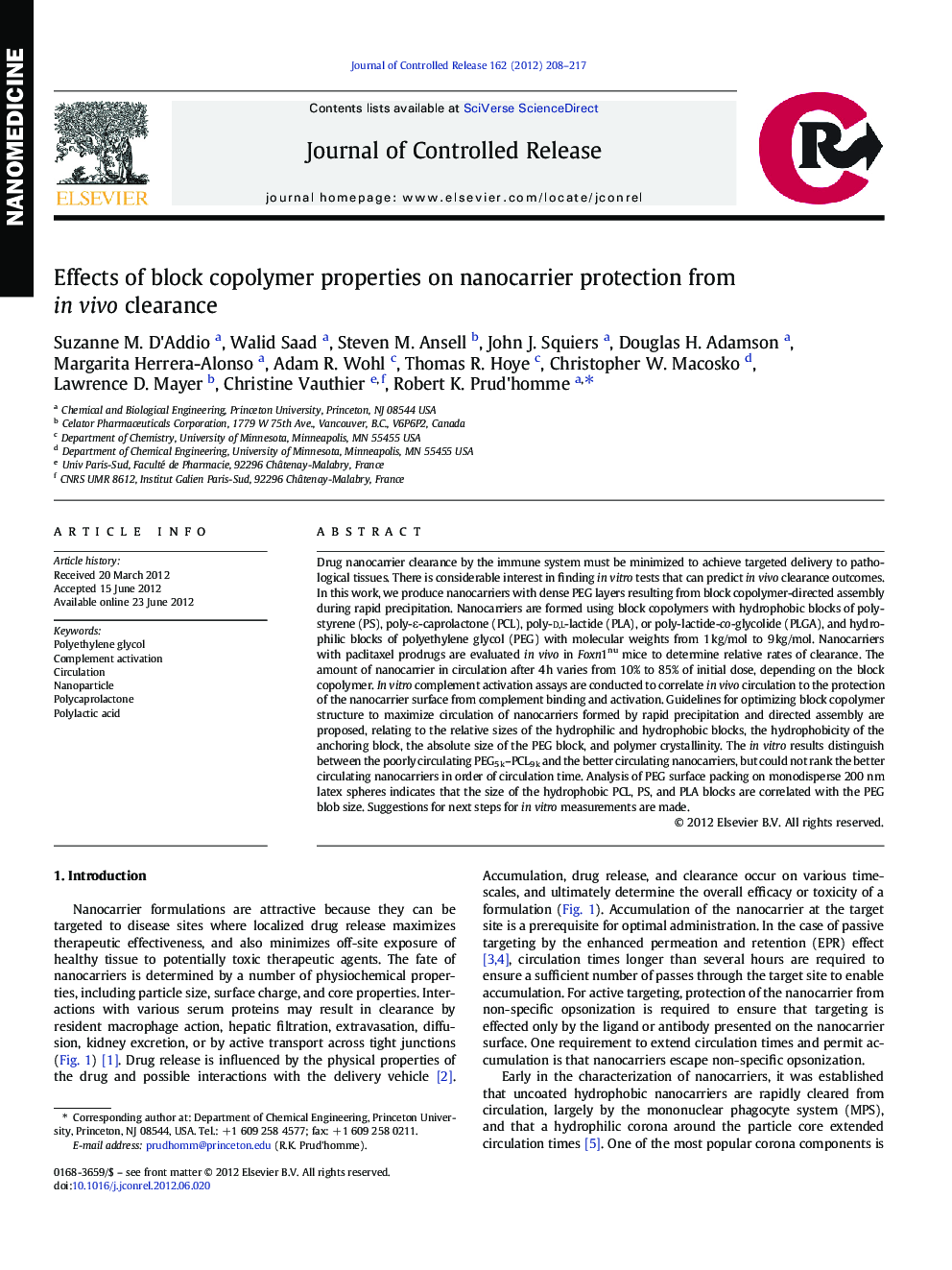| کد مقاله | کد نشریه | سال انتشار | مقاله انگلیسی | نسخه تمام متن |
|---|---|---|---|---|
| 1424597 | 986730 | 2012 | 10 صفحه PDF | دانلود رایگان |

Drug nanocarrier clearance by the immune system must be minimized to achieve targeted delivery to pathological tissues. There is considerable interest in finding in vitro tests that can predict in vivo clearance outcomes. In this work, we produce nanocarriers with dense PEG layers resulting from block copolymer-directed assembly during rapid precipitation. Nanocarriers are formed using block copolymers with hydrophobic blocks of polystyrene (PS), poly-ε-caprolactone (PCL), poly-d,l-lactide (PLA), or poly-lactide-co-glycolide (PLGA), and hydrophilic blocks of polyethylene glycol (PEG) with molecular weights from 1 kg/mol to 9 kg/mol. Nanocarriers with paclitaxel prodrugs are evaluated in vivo in Foxn1nu mice to determine relative rates of clearance. The amount of nanocarrier in circulation after 4 h varies from 10% to 85% of initial dose, depending on the block copolymer. In vitro complement activation assays are conducted to correlate in vivo circulation to the protection of the nanocarrier surface from complement binding and activation. Guidelines for optimizing block copolymer structure to maximize circulation of nanocarriers formed by rapid precipitation and directed assembly are proposed, relating to the relative sizes of the hydrophilic and hydrophobic blocks, the hydrophobicity of the anchoring block, the absolute size of the PEG block, and polymer crystallinity. The in vitro results distinguish between the poorly circulating PEG5 k–PCL9 k and the better circulating nanocarriers, but could not rank the better circulating nanocarriers in order of circulation time. Analysis of PEG surface packing on monodisperse 200 nm latex spheres indicates that the size of the hydrophobic PCL, PS, and PLA blocks are correlated with the PEG blob size. Suggestions for next steps for in vitro measurements are made.
Graphical AbstractFigure optionsDownload high-quality image (244 K)Download as PowerPoint slide
Journal: Journal of Controlled Release - Volume 162, Issue 1, 20 August 2012, Pages 208–217